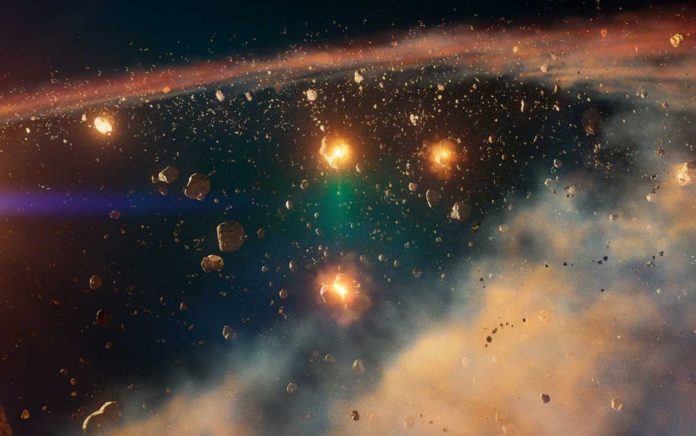Planetary scientists have more precisely reconstructed the early history of many asteroids than ever before, indicating that the early solar system was more chaotic than previously assumed.
There was still a lot of gas and dust surrounding the newborn sun when it first exploded. Rock shards of varying sizes have been accumulating in the dust for millennia. Many of these later planets used them as building blocks. Others, such as asteroids in the asteroid belt, did not become part of a planet and continue to orbit the sun today.
Iron samples from the cores of asteroids that fell on Earth as meteorites were analyzed by researchers from ETH Zurich and the National Centre of Competence in Research (NCCR) PlanetS in conjunction with an international team. They were able to piece together a piece of their early past during the formation of planets. They published their findings in the journal Nature Astronomy.
Alison Hunt, study lead author and researcher at the ETH Zurich and the NCCR PlanetS, notes, “Previous scientific studies showed that asteroids in the solar system have remained relatively unchanged since their formation, billions of years ago.”
“They therefore are an archive, in which the conditions of the early solar system are preserved,” Hunt explains.
But before the researchers could open this archive, they had to carefully prepare and study the extraterrestrial material. The scientists collected samples from 18 different iron meteorites that were formerly part of asteroids’ metallic cores. To conduct their investigation, they had to dissolve the samples in order to isolate the elements Palladium, Silver, and Platinum for further investigation. They analyzed the abundances of different isotopes of these elements using a mass spectrometer. Isotopes are different atoms of the same element, in this case, Palladium, Silver, and Platinum, that have the same number of protons but differ in the number of neutrons in their nucleus.
In the first million years of our solar system, radioactive decay of isotopes warmed the metal cores of asteroids. A specific Silver isotope created by radioactive decay began to accumulate as they cooled. The researchers were able to establish when and how quickly the asteroid cores cooled by measuring the current Silver isotope ratios within the iron meteorites.
The results showed that the cooling happened quickly and was probably caused by violent collisions with other bodies that broke off the asteroids’ protective rocky mantles and exposed their metal cores to the cold of space. Previous research based on Silver isotope measurements had suggested rapid cooling, but the timing had remained unknown.
“Our additional measurements of Platinum isotope abundances allowed us to correct the Silver isotope measurements for distortions caused by cosmic irradiation of the samples in space. So we were able to date the timing of the collisions more precisely than ever before,” Hunt says. “And to our surprise, all the asteroidal cores we examined had been exposed almost simultaneously, within a timeframe of 7.8 to 11.7 million years after the formation of the solar system.”
In light of the near-simultaneous collisions of the many asteroids, the scientists concluded that this age of the solar system must have been extremely turbulent. “Everything seems to have been smashing together at that time,” Hunt says. “And we wanted to know why,” she continues.
By integrating their findings with those from the most recent, most complex computer simulations of solar system evolution, the researchers investigated various causes. Together, they might be able to eliminate some of the more speculative possibilities.
Maria Schönbächler, study co-author, NCCR PlanetS member, and Professor of Cosmochemistry at the ETH Zurich, adds, “The theory that best explained this energetic early phase of the solar system indicated that it was caused primarily by the dissipation of the so-called solar nebula.”
“This solar nebula is the remainder of gas that was left over from the cosmic cloud out of which the Sun was born. For a few million years, it still orbited the young Sun until it was blown away by solar winds and radiation,” Schönbächler explains.
While the nebula was still there, it slowed down the objects that were orbiting the Sun in it. This is similar to how air resistance slows a moving car. According to the researchers, the lack of gas drag allowed the asteroids to speed and smash with one other when the nebula vanished, much like bumper cars in turbo mode.
“Our work illustrates how improvements in laboratory measurement techniques allow us to infer key processes that took place in the early solar system – like the likely time by which the solar nebula had gone. Planets like the Earth were still in the process of being born at that time. Ultimately, this can help us to better understand how our own planets were born, but also give us insights into others outside our solar system,” Schönbächler concludes.
Image Credit: ETH
You were reading: Iron In Meteorites Indicates A More Chaotic Early Solar System – New Research
